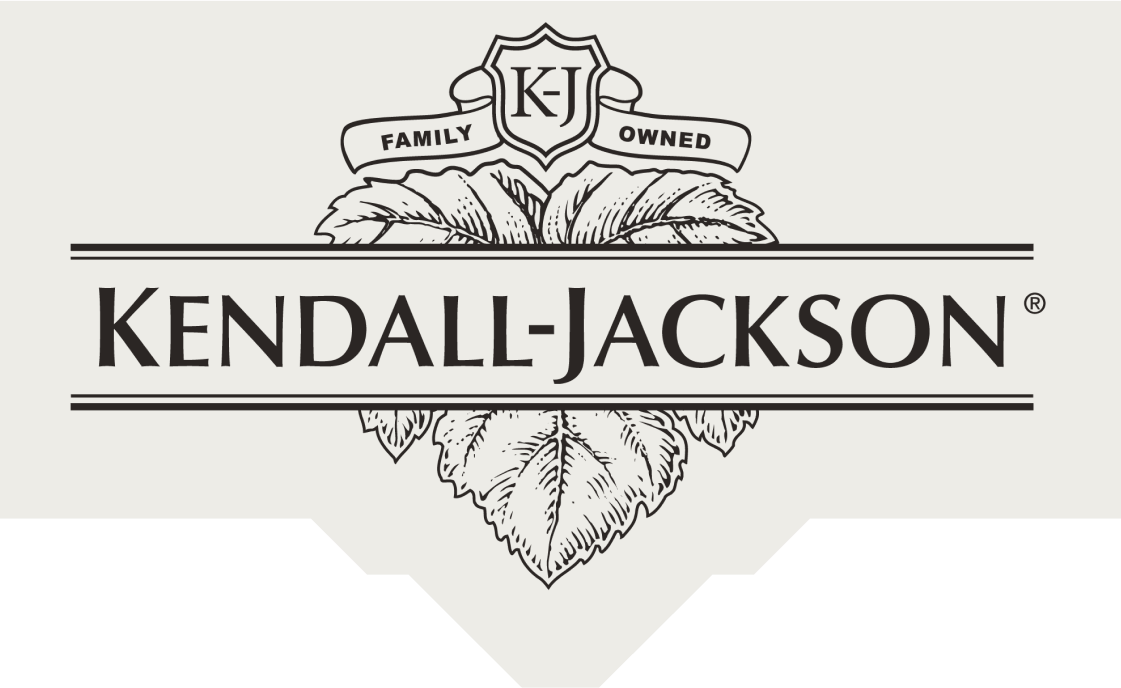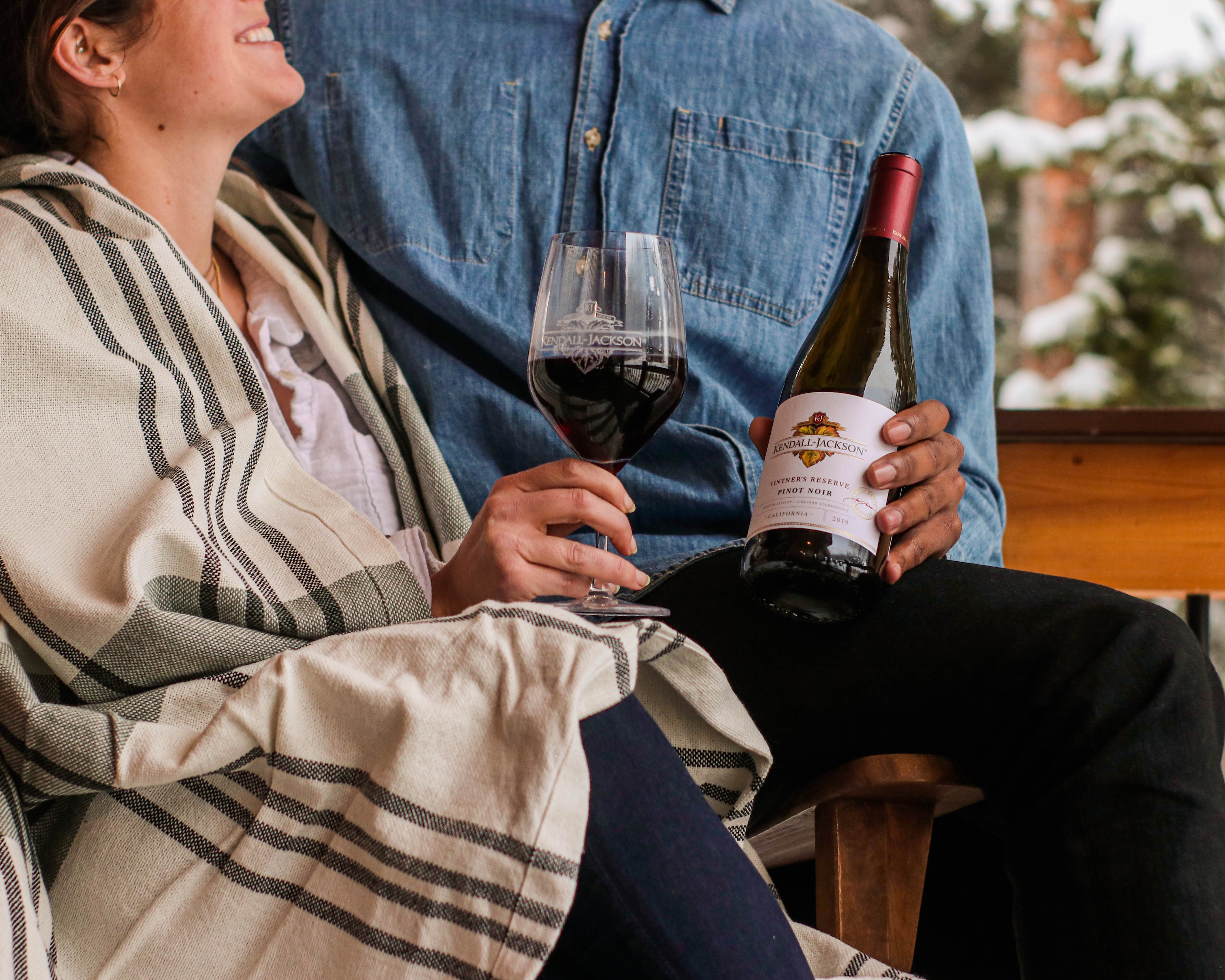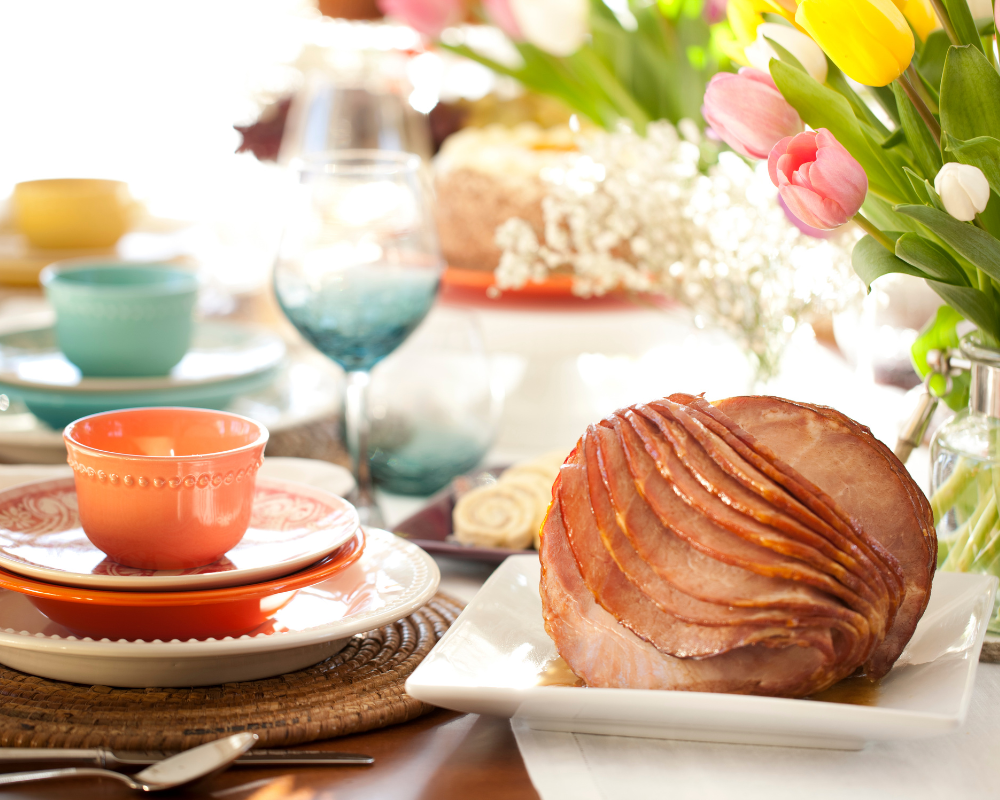Understanding Chardonnay: Styles, Characteristics, and Tasting Notes
What makes a Chardonnay a Chardonnay? It's all about style! Chardonnay is a glamorous grape, famous for some of the world's priciest and most coveted bottles. Chardonnay is also an egalitarian grape, making gently-priced wine for everyday enjoyment.
Just as in fashion, there is something for everyone when it comes to enjoying Chardonnay. This is one of the baffling qualities of Chardonnay. Chardonnay wine is so successful that it is almost a brand, but a Chardonnay wine can be just about anything!
Chardonnay is one of the most malleable wine grapes we know. That goes for all grapes - white and red. Why is Chardonnay so amazing? For starters, Chardonnay can be grown in almost any climate and any soil. That trait alone means that this single grape has the potential to bring winemakers an impressive array of different flavors. In fact, Chardonnay does grow just about everywhere. It's the most widely planted grape variety on our planet. Wine lovers even celebrate International Chardonnay Day!
Chardonnay doesn't stop there though. Chardonnay's characteristics provide winemakers with a playground of possibilities. Moreover, there are many winemaking techniques that can be used to mold a Chardonnay into expressing a particular style. So, what does Chardonnay taste like, really?

Chardonnay Characteristics
Without the impression of extreme climates or weather or any winemaking, the inherent aromas and flavor characters of Chardonnay usually are not pronounced. When you taste the grapes or the freshly-pressed juice at harvest, before the fermentation has begun, Chardonnay isn't much more than vaguely grapey. This is distinctly different from more vibrant and dynamically aromatic grapes like Sauvignon Blanc and Riesling.
This neutrality is one of the reasons winemakers ferment and age this variety in oak, leave it on its yeast lees (those are the dead yeast cells that fall out of suspension after fermentation) and do battonage (or lees stirring, which creates more flavor). All this is not to say that Chardonnay is void of personality. Far from it! Chardonnay has a wide range of fruit aromas. They are simply more discreet.
Aroma and Tasting Notes
Starting on the tangier end of the spectrum, Chardonnay aromas show lemon and grapefruit. Moving up the ripeness scale, there are melon, peach and green apple. Going up another notch, we get pear and yellow apple. Finally, we get to baked apples and tropical fruits, like pineapple and mango.
Chardonnay has non-fruit aromas, too. These can taste of mushrooms, truffles, earth (ranging from dried clay to forest floor) and minerally characters (such as wet stones, flint or pencil shavings). These are usually the most pronounced in Chardonnays from cooler climates.
Incredibly, the taste that most wine sippers identify with Chardonnay is not an innate flavor at all. Chardonnay grape juice is not buttery!
These are Chardonnay's aromatic characters, or what we might also call Chardonnay's taste. Chardonnay has a kind of palate feel DNA, too. For example, Chardonnay is high in acidity (that sensation at the joint of your jaw that makes your mouth water.) That is why it is used in sparkling wines and is one of the reasons that some Chardonnays can age well (see below on age-ability).
Body and Texture
Chardonnay wines can be light to full in body. (To understand body, just think of dairy products' hefts: skim milk, two percent, whole milk, half-and-half.) Generally the warmer the climate in which it is grown, the more generous the body and alcohol in the Chardonnay.
Chardonnay also has a broad mid-palate. It's almost like it lays spread eagle on the palate. This is in contrast to Sauvignon Blanc, which carves out a narrow path right down the center of the palate. Additionally, wines from warmer climates often also have a mouth-coating, oily texture that give them an additional sense of mid-palate heft.
As you can see, even though Chardonnay is subtle, it has plenty of personality! So, let's take a look at how Chardonnay tastes because the many different tastes of Chardonnay are what gives it such versatility in sipping and in food and wine pairing.
Chardonnay Styles
When we think of Chardonnay wine, we generally think of still wine, or table wine. Yet, Chardonnay is frequently made into a sparkling wine. Is Chardonnay sweet? Rarely. There are, however, some (usually) inexpensive, fruit-popping wines that may have some residual sugar to make them easier to enjoy. Chardonnay is occasionally made as full-on sweet, or dessert wines, in a late harvest or even an ice wine style. Most Chardonnay is made as a varietal wine, or a wine made from a single grape variety, but Chardonnay can be blended as well. When made as a bubbly, Pinot Noir is its most common companion. Chardonnay can show rapier-like acidity and a crunchy dry bite, or it can feel velvety with a caressing, buttery texture.
There are three main styles of Chardonnay: sparkling, unoaked and oaked. Is unoaked Chardonnay buttery? Is sparkling Chardonnay just oaky Chardonnay with bubbles? Let's take a look.
Sparkling Chardonnay
Good news: sparkling Chardonnay is not a soda-pop version of oaked Chardonnay. It is distinctly different in production and style. One of the biggest differences is that its grapes are picked earlier to create a highly refreshing wine. This is one of the reasons we often drink sparkling Chardonnay as an apéritif. After the first, alcoholic fermentation that changes the juice into wine, the new wine is fermented a second time, usually in the bottle in which it will be sold or possibly in a large tank. When the second fermentation occurs in the bottle in which the wine will be sold, the wine ages with its yeast lees for additional flavor development before those lees are removed. The longer the bubbly ages with its lees, the more it will develop flavors of biscuits, brioche and nuts in addition to its fruit bouquet of green apple, citrus and floral tones.
Sparkling Chardonnay that is made as a varietal wine is sometimes called Blanc de Blancs, or a white made from white grapes. A Blanc de Blancs tends to be a racier style than a sparkler made with other grapes like Pinot Noir, which give the wine more body.
Unoaked Chardonnay
To oak or not to oak, that is the question! A grape as charismatic as Chardonnay can't help but be governed by the fashion whims of an era. For the last ten years, unoaked Chardonnay has been a rising star in the Chardonnay style portfolio.
The name says it all. An unoaked Chardonnay - like the Kendall-Jackson Avant - sees no oak during its fermentation and ageing process. This leaves Chardonnay's natural flavors to shine on their own. Unoaked Chardonnays are often made in stainless steel tanks. Stainless steel tanks keep oxygen at bay in order to showcase pure fruit flavors. Stainless steel tanks also keep Chardonnay "tight" and lean in texture. Unoaked Chardonnay would belong to the silk family in the design world.
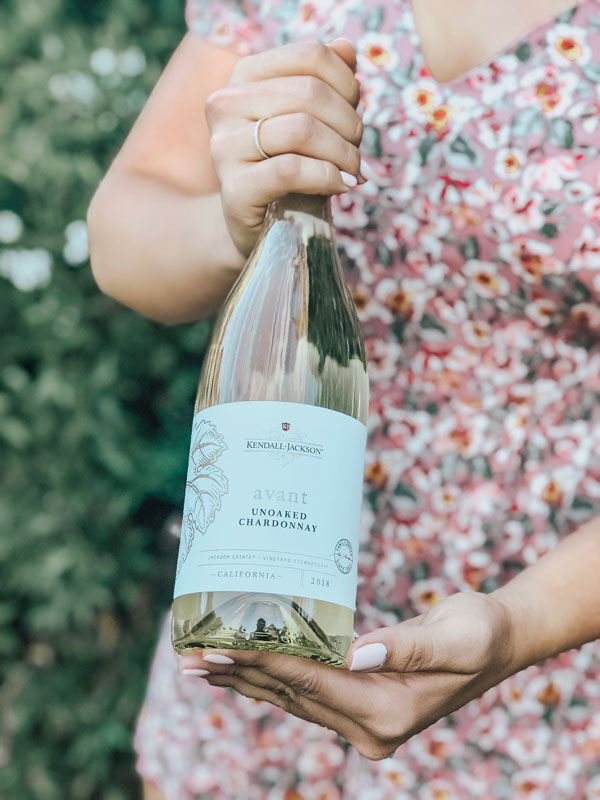
Chardonnay Another Way
Technically, however, an unoaked Chardonnay could be fermented in any vessel other than oak. That includes a wood barrel from a source other than oak, like acacia. Another currently fashionable way to ferment wines is in clay amphora (a.k.a anfora, qvevri and karas in different countries). These non-oak and non-stainless steel vessels won't contribute toasty, spicy and baked goods-esque flavors to Chardonnay, but they will contribute to the breadth and texture of the Chardonnay on the palate. These vessels give Chardonnay a wool-like texture.
Oaked Chardonnay
When talking of "oaked Chardonnay" or "oaky Chardonnay", it is generally meant that the Chardonnay saw new oak barrels. New oak barrels develop the potential of Chardonnay in many ways. They give Chardonnay aromas akin to baked apples, sweet spices and sometimes smoky notes, like the ones you find in the Vintner's Reserve, a.k.a. America's favorite Chardonnay for over two decades. New oak barrels also give Chardonnay a satiny texture.
The oak forests that provide the wood for new barrels are found primarily in the US, France and Eastern Europe. Just as Chardonnay vines grown thousands of miles away from one another taste different, different oak sources contribute distinct characteristics to oaked Chardonnay. European oak, and especially French oak, is most commonly used on Chardonnay. Oak is so important to Kendall-Jackson that founder Jess Jackson purchased a stave mill in France and partnered with a cooper to make the winery’s own barrels.
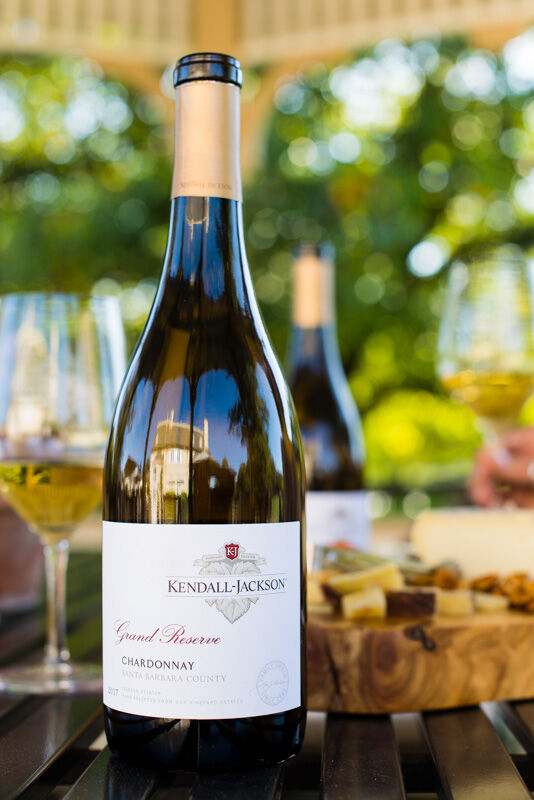
Buttery Chardonnay
The word Chardonnay tends to conjure up thoughts of buttery flavors today. This is due largely to the trend prevalent in New World wine regions (that's everywhere but Europe) in the 1990s and early aughts to make Chardonnay with buttery aromas and textures. These buttery Chardonnays were also oaky Chardonnays made in new oak barrels. However, just as butter is not a flavor inherent to the Chardonnay grape, oak is not responsible for Chardonnay's buttery, even brown buttery, character.
In fact, buttery tones are created via a secondary fermentation called malolactic fermentation. It may sound fancy, but it is actually a simple process through which the malic acid (à la tart green apple acid) turns into a gentler, lactic acid (back to thinking about those dairy products). Besides the buttery aromas and creamier texture, this fermentation process softens Chardonnay's naturally sassy acidity.
Chardonnay Ageability
There's a Chardonnay for every day, and some of those days are a long way away. Even if they are still delicious when they are young, the best Chardonnays are age-worthy. That means that not only do they age, but (sometimes, unlike us!) they also benefit from their aging.
An important key to Chardonnay age-worthiness is its perky acidity. Chardonnay that can age well also needs flavor concentration and complexity. Generally, the higher quality the Chardonnay, the more age-worthy it will be. Most young wines will hold on perfectly well and may even evolve nicely for several years. But, it's usually only the top of the crop that ages the best, like the Jackson Estate Chardonnays.
Chardonnay Terroir
Along with inherent Chardonnay qualities, every Chardonnay carries a terroir imprint. Terroir is wine's equivalent of DNA. Consider the winemakers to be the designers and stylists. They can't just put any fashion on their model. They have to work with Chardonnay's DNA - and its terroir - to create the best possible results.
Kendall-Jackson winemakers work with lots of Chardonnay "fingerprints", stretching along much of the almost 5,000 mile-long US West Coast. From Santa Barbara to Monterey and Sonoma/Napa to Anderson Valley in California then on up to Oregon, each regional terroir shapes how different Chardonnays taste and feel. The diversity of these terroirs and their Chardonnays is what makes the Kendall Jackson Chardonnay Portfolio so diverse. Some wines are site or region specific. Others are blends of regions.
While the word terroir is derived from the French word terre, or earth, it refers to more than just soil. It includes geography, climate and plant material, too. Winemakers everywhere hold different opinions on which element is the most important contributor, but the team at Kendall-Jackson believes that their cool, West Coast climates are the most important element of terroir, along with the varietal strain of Chardonnay, known as a clone in wine speak, that they use with each terroir.
Chardonnay Clones
First and foremost, there's no need to fear the word clone when it comes to wine. Clones are not produced in petri dishes under the watchful eye of Dr. Frankenstein!
The vast majority of grapevine varieties reproduce asexually. So, clones are simply a vine cutting or bud taken from a single mother vine. Have you (or someone with a greener thumb than yours) ever propagated a new hydrangea, rose or spider plant from a clipping off another plant? That's exactly what a clone is in the vine world. Just as there are different colors of and petals forms on, say, chrysanthemums, there are differences within the Chardonnay family.
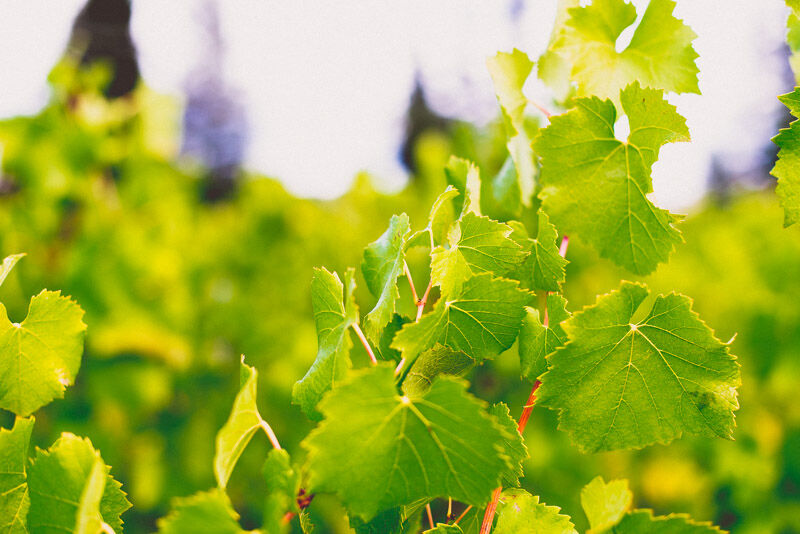
In the wine world, clones are good. Farmers use clones because they know they will be able to grow healthy vines with specific varietal characteristics. Seemingly contrary to their name, clones provide diversity. They also provide different colors, flavors, mouthfeels, acidities and ripeness levels. Importantly for the grape grower, some are better with certain soils than others or ripen at more favorable times, among other useful characteristics. K-J winemakers embrace their wide array of clones for the unique expressions of Chardonnay they offer, widening their styling options for the different Chardonnays they craft.
Clones can have cool names as well as boring and undescriptive names. Frankly, it's a good thing that most of them are blended and bottled as Chardonnay. Anyone for a glass of Z Clone? What's that? How about some Jackson Estate Arroyo Secco Chardonnay? Sounds tasty! Well, the Arroyo Secco Chardonnay turns out to be composed primarily of Z Clone, a type of Chardonnay with distinctive orange blossom and floral aromas. I told you that it's lucky that the wine geeks mostly have saved us from clone-laden labels!
If you are a self-appointed wine geek or you just want to be able to talk Chardonnay shop a bit more comfortably, here are some common terms. Most clones are "regular", that is they are particularly aromatic. Others are aromatic, or musqué, like the Z Clone.
On the US West Coast, other Chardonnay clone families include Heritage and Dijon clones. Heritage clones have long been a part of the California vinescape, and they often are named more interestingly after the vintners that helped the strain spread. Among them are Rued (much-loved at K-J), Wente, Martini and Mount Eden. Dijon clones - so called because the original package bearing them was postmarked in the city of Dijon - arrived in the US from Burgundy, France. With less personal attachments to the Dijon clones, American farmers kept it straightforward with numbers like 96, 95 and 76. While the numbers don't help us layfolk, it's nice to know that these particular Chardonnay Dijon clones are flavor and complexity laden ones. Not surprisingly, they form much of the core of the Vintner's Reserve Chardonnay!
The Multi-Faceted Character of Chardonnay
As you can see, Chardonnay isn’t just Chardonnay. Chardonnay provides a delightfully vast web of diverse wine styles created by a plethora of clones, terroirs and human winemaking skills. Whatever style of white wine you want, you can find it within the Chardonnay family!
At Kendall-Jackson, we take pride in being America’s favorite Chardonnay for over 30 years. Our commitment to quality and flavor ensures that every bottle reflects the unique characteristics of California’s finest vineyards. Explore our selection of Chardonnay wines today and discover your new favorite!
Christy Canterbury is a Master of Wine, journalist, speaker and judge based in New York City. In 2014, she was short-listed for the Roederer Online Wine Communicator of the Year Award. Her work has been published in Decanter, Wine Enthusiast, Edible Green Mountains, Wine Searcher, Food Arts, Snooth, Beverage Media, TimAtkin.com, Civiltà del Bere, Wine Business Monthly, TASTED, Selectus Wines and in other outlets.
